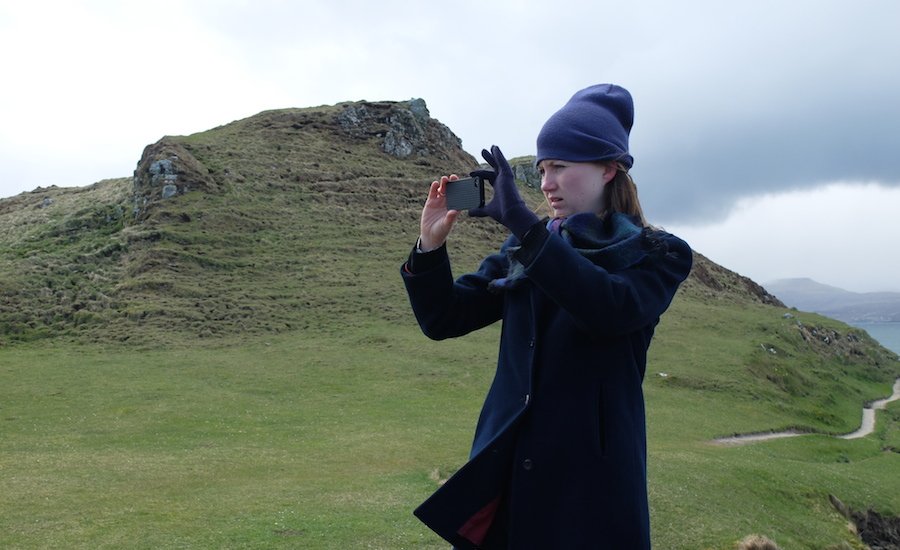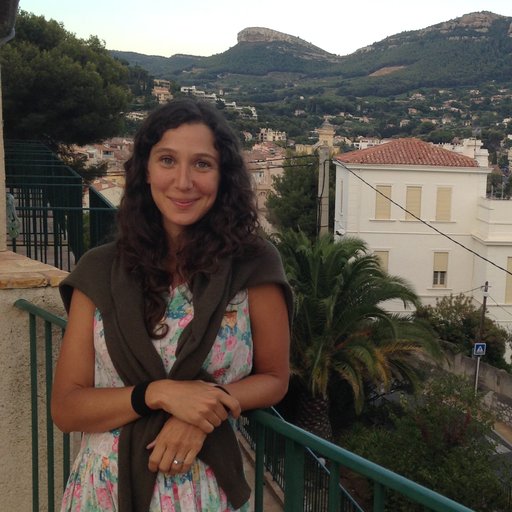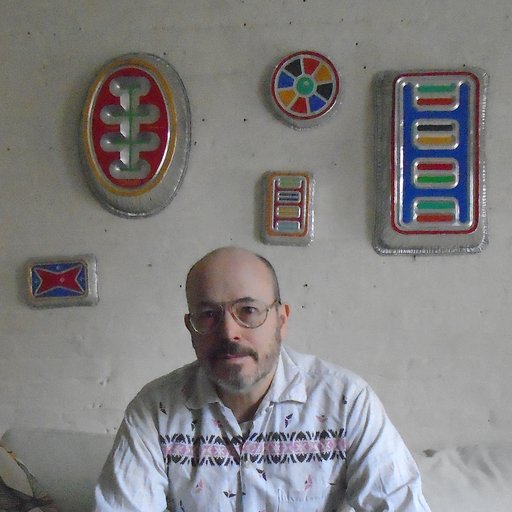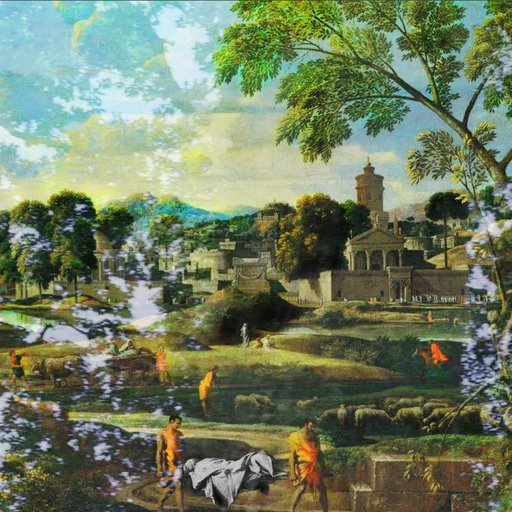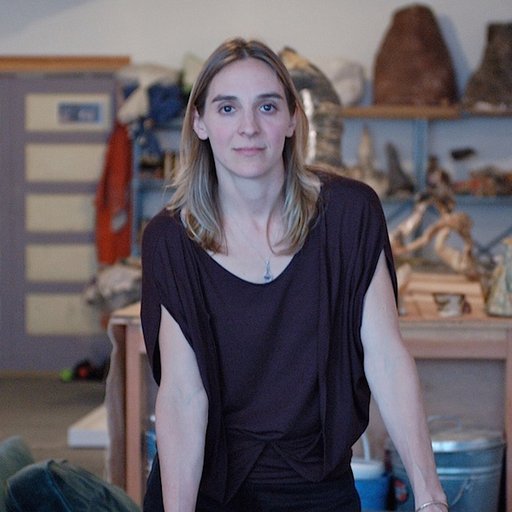Using a combination of sculpture, photography, and painting, Kate Bonner speaks to our current state of confusion about what, exactly, photographs are and where they live (in the "cloud," on paper, or in memory, to name a few possibilities). Made with the help of CNC routers and scanners, her works manipulate images in ways obvious and not and force them to interact with colorful frames and supports.
Bonner, who is based in Oakland, has an upcoming show at Luis de Jesus in Los Angleles (April 23 - May 28); she is also represented by Et al. in San Francisco, where she will exhibit in late 2016.
 An intervening object, 2014. (Available on Artspace)
An intervening object, 2014. (Available on Artspace)
What led you to become an artist?
Since I was young, I have loved and practiced both drawing and photography. I painted by number, I watched Bob Ross, my neighbor taught me to make figure line drawings, and her husband taught me to photograph roses with my SLR Canon AE-1. I especially loved drawing with charcoal or ink, and that morphed into a love for oil painting. In drawing and painting, I enjoyed creating contrasting textures, sparse color, or discordant/clashing color hues. College was the first time I encountered contemporary art, the first time I heard terms like "installation" or "conceptual" or "performance."
Can you describe your process, briefly?
Part photo, part object, my work is generated through a process of making and breaking apart. I find photographs, fold or cut them into pieces, and scan them. Then I digitally erase, paint over, or otherwise manipulate the images with photo-editing software. The images are printed onto fragmented surfaces. My artwork often features frames or margins; sometimes the frames conceal, instead of disclose, the content of the work.
Show us a picture or two of your studio:
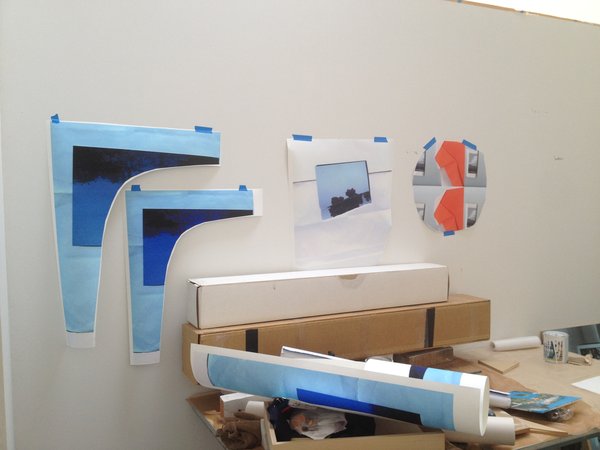
 Courtesy of the artist
Courtesy of the artist
What are you reading right now?
I really love fiction, but most of my books come from the thrift store or from the free-book exchanges in the neighborhood, so a lot of what I read depends on chance. Recently, I found a book on the sidewalk called Abbey’s Road, by Edward Abbey. This was a lucky find—Edward Abbey is new to me as an author, and I plan to read more by him. I'm also reading John Berger’s Understanding a Photograph.
What is art for? What does the best art do?
For me, art-making is inspired by play and process, and is a realization of intuitive logic. In terms of viewing, the best art produces transcendent, uncanny, profound feelings like dread, inadequacy, revulsion, wistfulness, lightness, smallness, infiniteness—feelings that are not always expressible in words.
What were the most important things you learned at art school?
I learned to prioritize my time, because there is never enough time, and to prioritize making art above reading about art or talking about art. I gave myself permission to do this.
When it comes to making art, what does cheating look like?
Everyone knows what cheating feels like. Cheating feels like looking over someone’s shoulder. The problem is that it's difficult to identify what cheating looks like, because there is such a thing as zeitgeist. When I find an artist that I identify with, I'm wary of looking at images of their work, and I self-censor to avoid making anything derivative. But then there is the zeitgeist, and I find out that I have made something in conversation with something that was made 30 years ago, or with a contemporary. There is something magical about that kind of conversation.
 At the endpoints, 2015. (Available on Artspace)
At the endpoints, 2015. (Available on Artspace)
What is the biggest challenge facing artists today?
Educational loans and debt.
What is your perspective on the art market?
Thinking about the art market is slightly more interesting to me than thinking about investment banking.
What historical period does your mind keep returning to, and why/what do we have to learn from it?
I continually return to early photography, to the emergence of photography as art. My great-grandmother, and great-great-grandparents were commercial photographers and I have inherited boxes of photographs, postcards and advertisements from the late 1800s and early 1900s. I am a minimalist and I’ve moved a lot, and these collections are an emotional weight—a sentimental burden.
The way that I deconstruct photographs and discard content in my studio is in opposition to early photography of the 1900s. The world was so different then, and we constructed meaning differently—things are fragmented now. In the 1900s, in the 1950s, photography asserted itself as art by presenting artistic, formal content. Photography aspired to represent as painting represents. Now we are inundated with photographic images. Nothing can be experienced without a camera.
Show us an image of an artwork by another artist that's very important to you:
 Gordon Matta-Clark, Conical Interest, 1975. Image courtesy of archv.sfmoma.org
Gordon Matta-Clark, Conical Interest, 1975. Image courtesy of archv.sfmoma.org
What is the most interesting or surprising reaction to your work that you’ve seen?
At the moment I am working with diagonal space: pressing into and cutting through surfaces with a CNC router. I am also making frames and breaking them apart, and incorporating fragments of pieces into other whole pieces. All of this is in preparation for my upcoming show at Luis de Jesus. I will also have work at a solo booth at NADA in New York with Et. al gallery, and then, in late 2016, a solo show with Et. al in San Francisco.
 Courtesy of the artist
Courtesy of the artist











